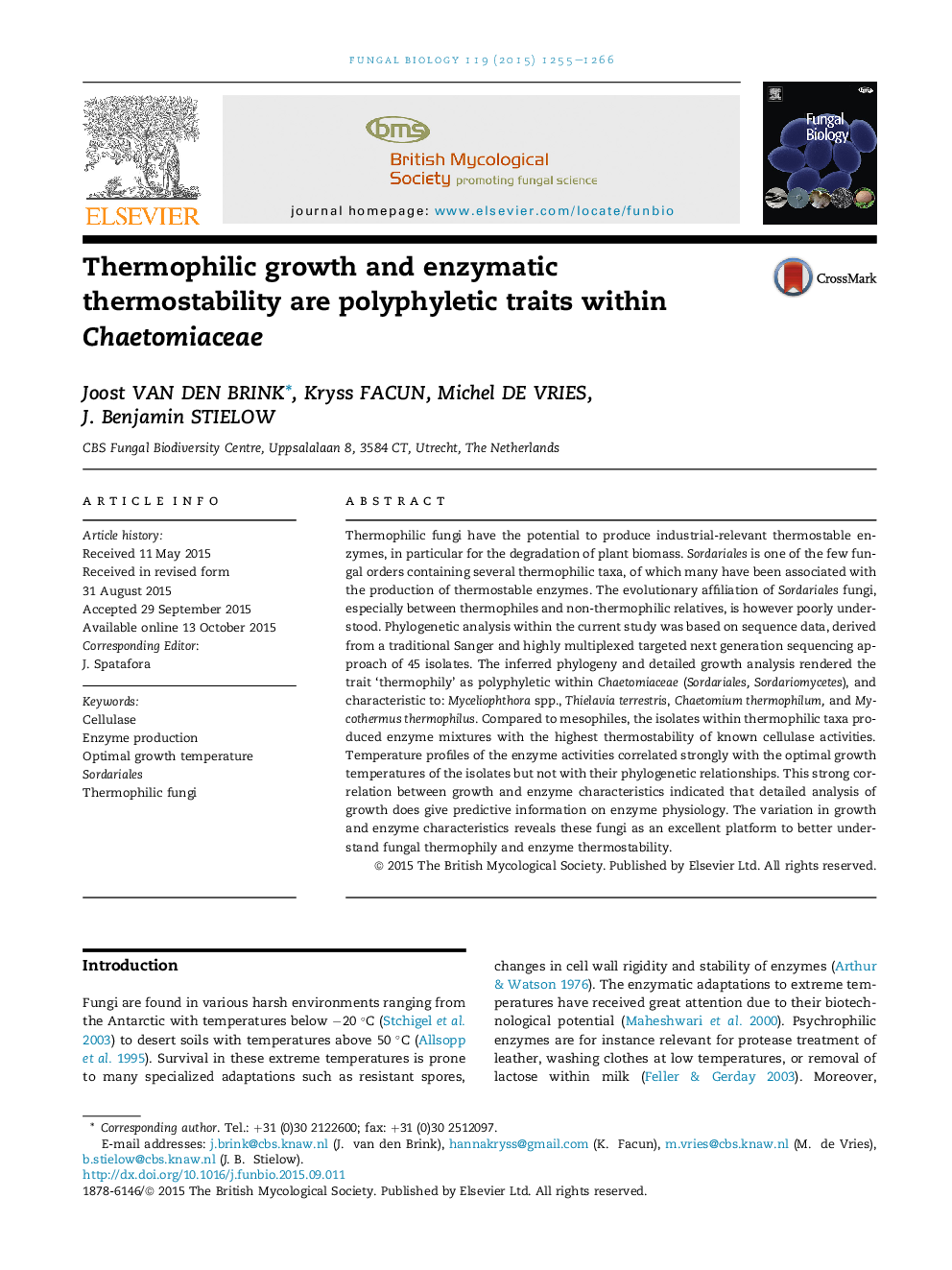| Article ID | Journal | Published Year | Pages | File Type |
|---|---|---|---|---|
| 4356845 | Fungal Biology | 2015 | 12 Pages |
•RPB2 (>3 kb) of Sordariales isolates were sequenced using next generation sequencing.•Complete RPB2 sequences are more informative than ITS, LSU, EF1, and EF3 sequences.•The trait thermophily was rendered polyphyletic in Chaetomiaceae.•Thermophiles compared to mesophiles produce the most thermostable cellulases.•Optimal growth temperatures give predictive information on enzyme thermostability.
Thermophilic fungi have the potential to produce industrial-relevant thermostable enzymes, in particular for the degradation of plant biomass. Sordariales is one of the few fungal orders containing several thermophilic taxa, of which many have been associated with the production of thermostable enzymes. The evolutionary affiliation of Sordariales fungi, especially between thermophiles and non-thermophilic relatives, is however poorly understood. Phylogenetic analysis within the current study was based on sequence data, derived from a traditional Sanger and highly multiplexed targeted next generation sequencing approach of 45 isolates. The inferred phylogeny and detailed growth analysis rendered the trait ‘thermophily’ as polyphyletic within Chaetomiaceae (Sordariales, Sordariomycetes), and characteristic to: Myceliophthora spp., Thielavia terrestris, Chaetomium thermophilum, and Mycothermus thermophilus. Compared to mesophiles, the isolates within thermophilic taxa produced enzyme mixtures with the highest thermostability of known cellulase activities. Temperature profiles of the enzyme activities correlated strongly with the optimal growth temperatures of the isolates but not with their phylogenetic relationships. This strong correlation between growth and enzyme characteristics indicated that detailed analysis of growth does give predictive information on enzyme physiology. The variation in growth and enzyme characteristics reveals these fungi as an excellent platform to better understand fungal thermophily and enzyme thermostability.
